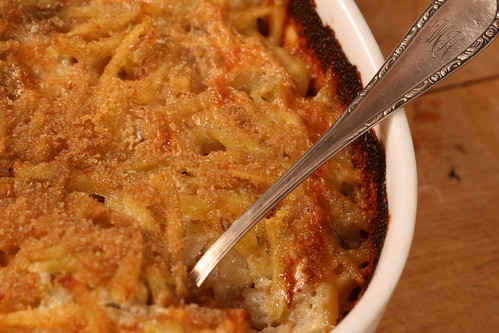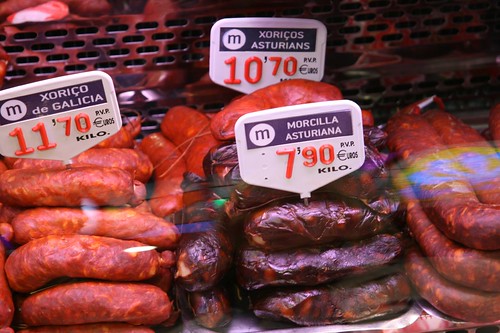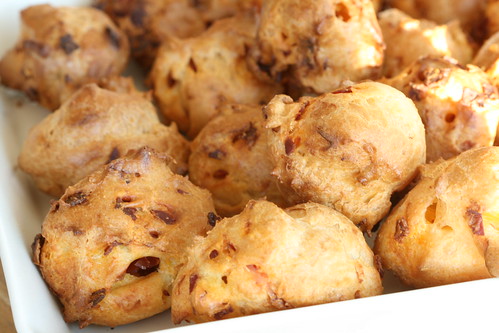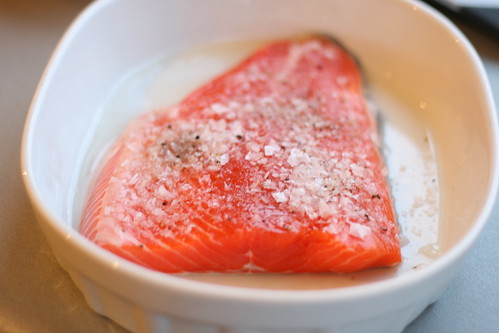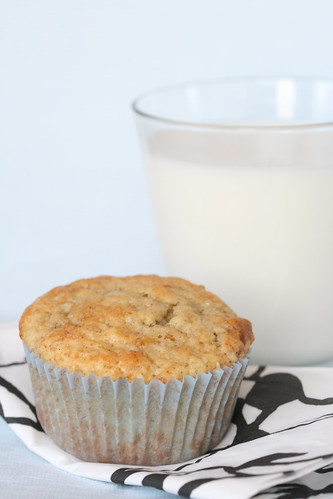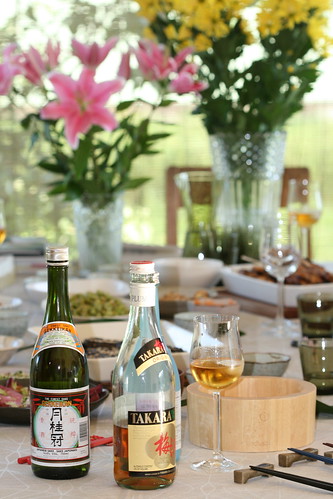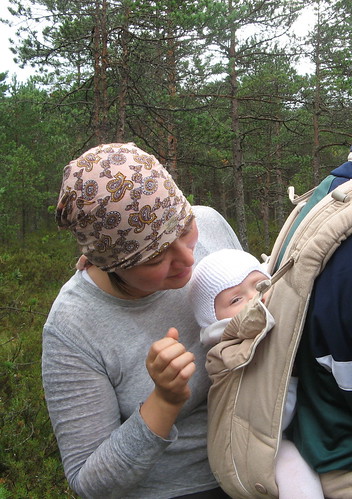
Ever since I enjoyed my first tuna-filled Galician turnover,
empanada gallega, on a hillside picnic about an hour's drive from Madrid last Spring - in a lovely company of
Ximena and her hubby J - I've been wanting to make these at home. I have been waiting for Ximena's special recipe to appear on
Lobstersquad (soon!), but meanwhile I came up with this version of the famous Spanish pastry. I must admit I was thoroughly satisfied with the result - and I hope that my Spanish friends approve.
Basically, it's a yeast pastry (tinged slightly red with the help of the very special and wonderful smoked Spanish paprika powder,
Pimentón de la Vera) that's encasing a moist and flavoursome tuna, egg and tomato filling. Although we had small turnovers on that memorable hillside picnic -
empanadillas gallegas - then it's more traditional to make one large pie that's cut into wedges.
Empanada Gallega de Atun or Galician Tuna Pie(
Galiitsia tuunikalapirukas)
Serves six to eight

Yeast pastry:
500 g plain flour
300 ml warm water (42 C)
100 g olive oil
1 sachet of active dry yeast
1 tsp smoked mild Spanish paprika (Pimentón de la Vera, dulce)
1 tsp salt
Filling:
2 cans of tuna chunks in brine (a 200 g), drained and flaked
3 Tbsp olive oil
2 large onions, chopped
1 green bell pepper, chopped
200 g chopped tomatoes (half a regular can)
2 garlic cloves, chopped
2 hard-boiled eggs, peeled and chopped
a handful of chopped fresh parsley
salt, black pepper and smoked paprika powder, to taste
For brushing:
egg
First, prepare the yeast dough. Mix flour, active dry yeast, paprika powder and salt in the mixing bowl. Stir in the water and oil and mix and knead until a uniform ball forms. (I use my KA mixer for this). Cover with clingfilm or a clean kitchen towel and leave to rise in a warm place for an hour.
For the filling, you start with
sofrito. Heat olive oil on a sauté pan, add onion and bell pepper and sauté for a few minutes. Add garlic, sauté for another few minutes. Then add the tomatoes, season with salt and pepper. Simmer on a low heat for about 10 minutes, until the vegetables are soft and the sauce has thickened a little.
Season with smoked paprika powder, salt and pepper to taste. Stir in drained and flaked tuna, chopped hard-boiled eggs and parsley.
Divide the yeast pastry into two more or less equal pieces. Dust your worktop with some flour and using the rolling pin, roll one piece into a large circle, about 5 mm thick. Transfer onto a baking sheet lined with parchment paper.
Spread the tuna, egg and tomato filling on top, leaving about 2 cm edge.
Roll out the other half of the pastry, place that over the filling. Crimp the edges together (see below).
Using a sharp small knife, cut couple of "breathing holes" on top of the pastry.
Brush with a whisked egg.
Bake in the middle of pre-heated 200 C oven for about 30 minutes, until the empanada is lovely golden brown on top.
Remove from the oven and leave to cool a little before cutting into wedges and serving.












